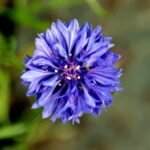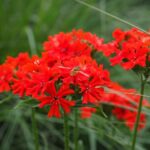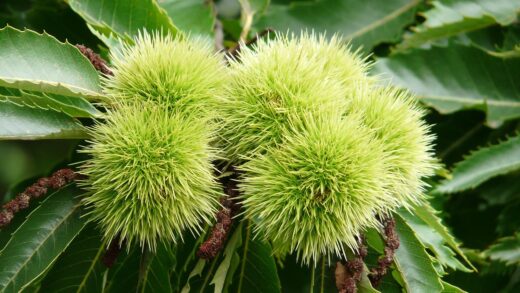Light requirements of the rosy primrose

Understanding and providing the correct light conditions for the rosy primrose is fundamental to cultivating a healthy plant that produces a profusion of its characteristically vibrant flowers. This species originates from the high-altitude regions of the Himalayas, where it often grows in open meadows or along stream banks, receiving bright but cool light, sometimes filtered by the high-altitude haze or surrounding vegetation. In a garden setting, the goal is to replicate these conditions by providing a balance between sufficient light for photosynthesis and robust flowering, and crucial protection from the harsh intensity of direct, hot sun. The ideal light exposure is typically described as partial shade or dappled sunlight, a condition that meets the plant’s needs without causing the stress associated with temperature extremes. Getting the light right is a cornerstone of successful cultivation, directly impacting the plant’s vigor, the intensity of its flower color, and its overall longevity in the garden.
The timing of light exposure throughout the day is a key consideration. Rosy primroses perform best when they receive several hours of gentle morning sunlight, which provides the energy they need for growth without the accompanying heat stress. An east-facing location, where the plant is exposed to the direct rays of the early sun but is then cast into shade for the hottest part of the afternoon, is often considered perfect. This morning light fuels the plant’s metabolic processes, while the afternoon shade protects its delicate foliage from scorching and prevents the soil from drying out too quickly, which is another critical requirement for this moisture-loving species.
The concept of “dappled shade” is also an excellent lighting scenario for the rosy primrose. This is the type of light found beneath the canopy of deciduous trees, where the sunlight is broken and filtered by the leaves above, creating a moving pattern of light and shadow on the ground below. This environment provides bright, indirect light for much of the day, closely mimicking the conditions of a woodland edge. Planting under high-canopied trees like oaks or maples can create a perfect home for a colony of rosy primroses, allowing them to naturalize and thrive in a low-maintenance setting.
Conversely, the one light condition to be avoided at all costs is prolonged exposure to direct, intense afternoon sun. This is especially true in climates with hot summers. The combination of high light intensity and heat will rapidly lead to physiological stress. The leaves will wilt, their edges will turn brown and crisp in a condition known as scorch, and the flowers will fade quickly, drastically shortening the beautiful spring display. In deep, dense shade, the plant may survive, but it will often produce lush foliage at the expense of flowers, becoming leggy and failing to bloom with the vigor it is known for.
The ideal balance of sun and shade
The key to unlocking the full potential of the rosy primrose lies in achieving the perfect equilibrium between sunlight and shade. This plant is not a deep-shade dweller, nor is it a sun-worshipper; it thrives in the nuanced light conditions found in between these two extremes. The ideal scenario provides the plant with enough sunlight to fuel vigorous growth and prolific flowering, while simultaneously offering protection from the intense solar radiation that can cause stress and damage. This balance is most commonly found in locations that offer partial shade, particularly shade during the hot afternoon hours.
More articles on this topic
For gardeners, this translates to selecting a planting site that receives approximately four to six hours of direct sunlight per day, preferably in the cooler morning hours. An east-facing border, which is illuminated by the morning sun and then falls into shadow as the sun climbs higher in the sky, represents the textbook perfect location. This allows the plant to complete much of its daily photosynthesis before temperatures peak, reducing transpirational water loss and preventing the foliage from scorching. The afternoon shade then provides a respite, keeping the plant and the soil around its roots cool and moist.
The quality of the shade is also an important factor. The “dappled shade” created by the high canopy of deciduous trees is highly beneficial. This type of light is dynamic and diffuse, bathing the plants in bright but indirect light for much of the day, with brief, shifting periods of direct sun. This environment closely mimics the plant’s natural habitat on the verges of woodlands or in alpine meadows. Planting under such a canopy allows the primroses to receive ample light in the early spring before the trees have fully leafed out, which is precisely when they are in their most active growth and flowering phase.
Ultimately, the goal is to avoid extremes. While too much sun is the more common and damaging problem, leading to burnt foliage and a shortened lifespan, too much shade is also detrimental. In a location with dense, year-round shade, such as on the north side of a building or under evergreen trees, the rosy primrose may struggle to produce flowers. It will likely grow lanky, with weak stems and an abundance of leaves, as it stretches in a futile search for more light. Observing the path of the sun through your garden at different times of the year is the best way to identify that perfect spot that offers this vital balance.
Interpreting signs of incorrect light exposure
Your rosy primrose plants will provide clear visual cues if they are receiving either too much or too little light. Learning to interpret these signals allows you to diagnose problems and make necessary adjustments to their location or environment. The most common issue is excessive sun exposure, which manifests in several distinct ways. The most obvious sign is leaf scorch, where the tips and margins of the leaves turn brown, dry, and brittle. This happens when the leaf tissue is essentially burned by the intense solar radiation and heat.
More articles on this topic
In addition to scorch, a plant receiving too much sun may also exhibit wilting during the hottest part of the day, even if the soil is moist. This is a sign of heat and water stress, as the leaves are losing moisture faster than the roots can absorb it. The vibrant pink color of the flowers may also appear washed-out or bleached, and the blooms themselves will fade and wither much more quickly than they would in a shadier location. Overall, the plant will have a stressed, tired appearance rather than the lush, vigorous look of a happy specimen.
On the other end of the spectrum, a rosy primrose that is not receiving enough light will also show clear symptoms. The most prominent sign of insufficient light is poor or non-existent flowering. The plant may produce a healthy-looking clump of leaves, but it will fail to form flower buds or will produce only a few, small, and spindly flower stalks. The energy from sunlight is a critical component in the process of flower production, and without enough of it, the plant will prioritize vegetative growth for survival.
Another key indicator of too little light is etiolation, or legginess. The leaf stems (petioles) and flower stalks will become elongated and weak as they stretch towards the nearest light source. The foliage may also be a darker green than usual, as the plant produces more chlorophyll in an attempt to capture every available bit of light. A plant in deep shade will lack the compact, sturdy habit of one grown in appropriate light conditions. If you observe these symptoms, it is a clear indication that the plant needs to be moved to a brighter location.
Seasonal light variations and considerations
The light requirements of the rosy primrose are not static; they change in relation to the seasons and the plant’s growth cycle. This is particularly relevant when the plant is situated under deciduous trees, which is often an ideal location. In the early spring, when the primrose is emerging, actively growing, and sending up its flower stalks, the branches of the deciduous trees above are still bare. This allows a significant amount of direct sunlight to reach the plants on the ground, providing the high energy levels needed for their spectacular floral display.
As spring progresses and gives way to summer, the canopy of the deciduous trees leafs out, creating the dappled shade that is perfect for the post-flowering period. This increasing shade protects the primrose’s foliage from the strengthening summer sun, keeping the plant cool and helping to conserve soil moisture during the hottest months of the year. This natural, seasonal shift in light intensity is perfectly synchronized with the plant’s needs, making a woodland garden or a border under deciduous trees one of the most successful environments for its cultivation.
It is important to consider this seasonal change when planning your garden. Do not mistake the full sun of a location in early spring for a full-sun location year-round. A spot that seems perfect for a sun-loving perennial in March might become a deep, shady spot by June once the overhead canopy develops. This makes the rosy primrose an excellent companion plant for summer-blooming, shade-loving perennials like hostas and astilbes, as the primrose has already completed its main flowering cycle by the time the shade becomes dense.
In gardens without deciduous trees, you may need to be more mindful of these seasonal shifts. For example, a location that is shaded by a building in the spring might receive more direct sun in the summer as the sun’s path across the sky becomes higher. Conversely, an east-facing bed may provide perfect morning sun in the summer, but the lower angle of the sun in spring might mean it receives fewer hours of direct light. Observing your garden’s specific light patterns throughout the year is crucial for making the best long-term placement decisions for your plants.
















